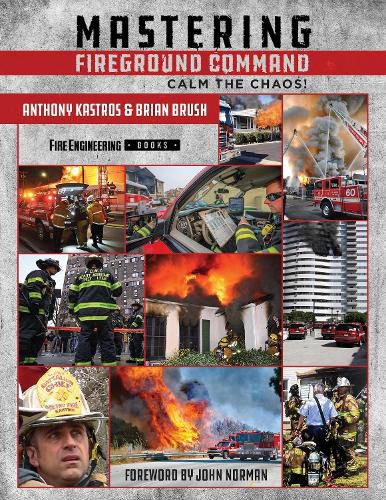Readings Newsletter
Become a Readings Member to make your shopping experience even easier.
Sign in or sign up for free!
You’re not far away from qualifying for FREE standard shipping within Australia
You’ve qualified for FREE standard shipping within Australia
The cart is loading…






This unprecedented text has more than 1,000 years of combined experience in command case studies by incident commanders from coast to coast. Why read this book? *Improve communications, risk assessment, and accountability with less radio traffic. * Develop an aggressive team to save more civilian lives while keeping firefighters from unnecessary risk. * Bridge the tactical gap between the incident commander and crews working at the front. * Apply military models of decentralization and empowerment to outpace the incident, regardless of type. * Integrate the latest data from Firefighter Rescue Survey and UL FSRI to maximize effectiveness. * Rapidly organize tactics and resources for house fires, apartment fires, hotels, motels, commercial buildings, taxpayers, big boxes, strip malls, row houses, high-rises, Maydays, vegetation fires, wildland urban interface, multi-casualty incidents, hazardous materials incidents, and even unified command incidents.This book meets the FESHE curriculum for the Strategies and Tactics and Disaster Planning and Control courses, connects to job performance requirements (JPRs) of NFPA 1021 for Fire Officers I-IV and is consistent with the most current NFPA, NIMS and FIRESCOPE standards and expectations.
$9.00 standard shipping within Australia
FREE standard shipping within Australia for orders over $100.00
Express & International shipping calculated at checkout
This unprecedented text has more than 1,000 years of combined experience in command case studies by incident commanders from coast to coast. Why read this book? *Improve communications, risk assessment, and accountability with less radio traffic. * Develop an aggressive team to save more civilian lives while keeping firefighters from unnecessary risk. * Bridge the tactical gap between the incident commander and crews working at the front. * Apply military models of decentralization and empowerment to outpace the incident, regardless of type. * Integrate the latest data from Firefighter Rescue Survey and UL FSRI to maximize effectiveness. * Rapidly organize tactics and resources for house fires, apartment fires, hotels, motels, commercial buildings, taxpayers, big boxes, strip malls, row houses, high-rises, Maydays, vegetation fires, wildland urban interface, multi-casualty incidents, hazardous materials incidents, and even unified command incidents.This book meets the FESHE curriculum for the Strategies and Tactics and Disaster Planning and Control courses, connects to job performance requirements (JPRs) of NFPA 1021 for Fire Officers I-IV and is consistent with the most current NFPA, NIMS and FIRESCOPE standards and expectations.